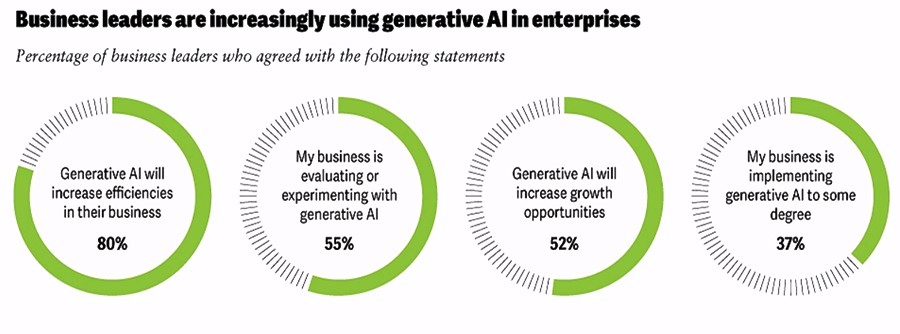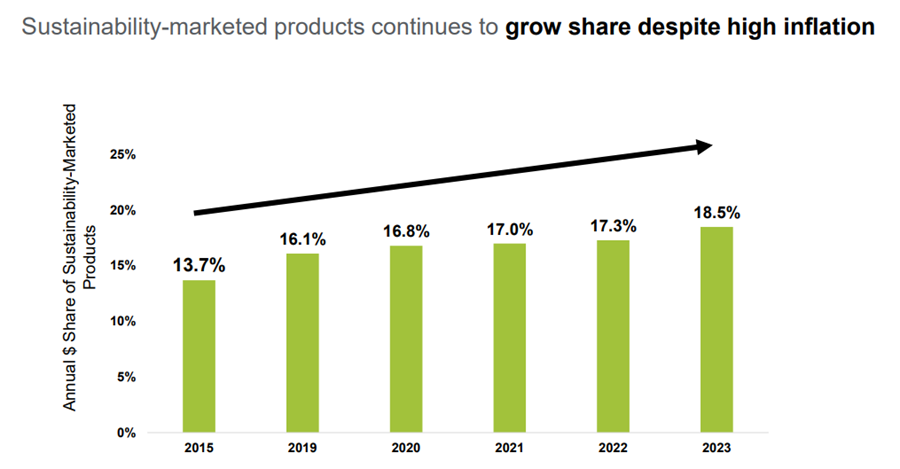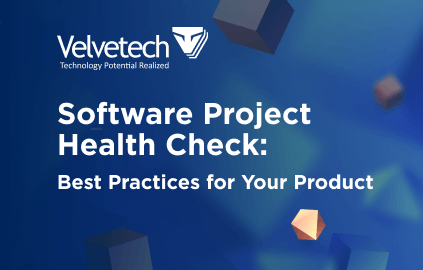The software as a service (SaaS) model has consistently grown in popularity over the last few years. More and more businesses develop digital products and opt to distribute them via the cloud.
SaaS applications serve a wide range of users, from companies and professionals to individuals looking to manage a particular aspect of their life. Hence, savvy business leaders are keen to develop a product that fills a market gap and capitalize on the opportunities that the SaaS distribution model provides.
However, before you begin building the next Qualtrics, Dropbox, or Netflix, take a brief pause to look over the top SaaS industry trends. That way, you’ll be able to determine which aspects of your digital product are worth prioritizing, given the innovation and the future of the SaaS sector.
1. Niche SaaS
One of the key trends in SaaS this year is specialization. The one-size-fits-all market is rather saturated, especially in B2B SaaS, by the biggest players like Microsoft, Google, and Amazon. So, the most lucrative business opportunity lies in building SaaS solutions for a particular niche that addresses the concrete and unique needs of end users.
“In niche vertical markets, a low-touch sales strategy will have greater success than its non-vertical counterparts. When the product is custom-built for its users, it advertises itself to a certain degree, by having a built-in understanding of the user organization’s needs and pain points.”
Focusing on a narrow segment of target users in particular industries is what will help new products stand apart and grab the coveted market share. Here, it’s important to note that “niche” does not mean that you will need to cater to a very small set of users that may not be worthwhile financially.
On the contrary, if you manage to create a SaaS solution that is highly specialized and does its job well, you might even be able to convert some users from one-size-fits-all providers to you! Thus, allowing your business to scale rather quickly.
Discover how we built a Niche SaaS Platform for the MCA Industry
User-Driven Approach
Watch our webinar and learn the top ways of reducing poor user satisfaction, low adoption rates, and decreased loyalty.
2. Flexible Pricing Models
One of the major emerging SaaS trends has a lot to do with the business model. You see, modern customers don’t want to be locked in with long-term, hard-to-stop contracts. As such, regardless of whether you are focusing the SaaS product on the B2C or B2B market, a major emerging trend involves flexible pricing models. What do we mean by that?
Well, it essentially means offering value-based pricing that doesn’t force users to overpay for features they don’t require. You have to remember, consumers have access to myriads of information prior to making a purchase. They search, assess, and compare all of the top alternatives before they make a decision. Hence, you’ve got to showcase value-to-cost alignment from the get-go. Otherwise, you risk losing prospects to competition.
Learn more about the SaaS Pricing Models and Strategies
3. AI and GenAI Become a Standard
Another major trend in the SaaS sector is artificial intelligence becoming more prevalent. Of course, AI is not a brand-new occurrence. In fact, its popularity has skyrocketed in both — B2B and B2C sectors. As such, users now expect AI in one form or another within the digital products that they use.
In particular, generative AI has taken a leap and entices more businesses to adopt it in their solutions. That’s no wonder, given the speed of technology development and the opportunities it creates.

Source: Deloitte
So, what can AI and GenAI do for your SaaS product? A lot. They can help personalize experiences, provide in-depth user behavior analytics, automate workflow processes, and so much more. There are myriads of uses for artificial intelligence across industries. Thus, definitely make sure to look into how it can make your solution even better.
Learn more about the Power of AI in Business
4. Mobile-First Development
The future of SaaS, just like that of many other software types, is mobile. Internet traffic coming from mobile users surpassed those browsing via the web back in 2019, and the split between the two is only growing.
Hence, it’s not surprising that a highly prevalent SaaS industry trend is mobile-first development. With this approach, new SaaS products are first built for easy smartphone accessibility and only after adapted for laptops and desktops.
So, in the next few years SaaS creators will be doubling down on improving accessibility, enhancing experiences, incorporating AR elements, and generally prioritizing mobile app technology.
Check out our Guide to the Mobile App Development Process
Choosing a Winning App Development Strategy
Watch our webinar to uncover effective mobile development approaches and launch your app.
5. Security Remains a Priority
Data breaches and cyber attacks are a threat to every industry. So, no matter the focus of your SaaS product — prioritizing security is a must. If you operate in an especially sensitive sector like healthcare, you’ve got to have good safety measures in place, as online criminals tend to target the medical industry often.
Read about Healthcare Data Security
Due to the cloud-based nature of SaaS architecture, there are some extra precautions product developers should take to continuously ensure security. One of the latest SaaS trends in this regard is the incorporation of machine learning algorithms for better threat detection through pattern recognition.
With the aid of intelligent systems, user data and your product’s integrity can be protected as they will detect threats, send alerts, and deploy safeguarding measures swiftly. So, spend some time outlining your digital security strategy and thinking of ways to implement the latest useful innovations that might help. It’ll be well worth it down the road.
There’s an interesting video about the cybersecurity trends back in 2023 by IBM Technology. Check it out; it’s still apt, and it will give you a good sense of what’s going on in this niche:
6. Seamless Integrations
Naturally, since SaaS popularity is growing, it is imperative for these solutions to smoothly integrate with other systems, particularly in the B2B context. Otherwise, there’ll be no harmony within the IT infrastructure, and it will be difficult to set up truly helpful workflows.
So, a SaaS trend we are currently seeing is one where vendors provide vast integration capabilities with their products. They no longer redirect users to third-party APIs and instead offer seamless integrations themselves. Thus, facilitating truly hybrid cloud strategies and allowing users to retain flexibility when it comes to their IT infrastructure.
Check out Velvetech’s VoIP and CRM System Integration Project
7. New Retention Strategies
“Retention isn’t a silver bullet, but in SaaS, it’s the closest thing to it.”
— TechCrunch
According to TechCrunch, businesses with well-thought-out retention strategies grow at least 1.5 to 3 times faster. Yet, in 2022, more than half of SaaS companies had lower retention than in the preceding year.
Hence, an important SaaS industry trend in the coming months will be focusing on enhancing retention and coming up with new strategies for minimizing churn. Specifically, companies will be aiming to:
- Offer personalized onboarding and tutorials to immediately make a good impression
- Create efficient customer support processes that allow for quick problem-solving
- Improve the overall user experience by doubling down on UI/UX design
- Identify customers with the highest LTV accurately and create strategies to retain them
- Detect users at risk of churn preemptively to make offers that might change their mind
Getting retention right is a SaaS business model growth trend that is bound to be top of mind for organizational leaders. So, don’t fall behind.
8. Tailored UX with Hyper-Personalization
With the previous trend in mind, hyper-personalization doesn’t seem surprising. This is one of the core expectations in SaaS, moving beyond generic customization to deliver highly targeted and individualized experiences for users.
The growth of the SaaS market will push providers to implement sophisticated AI and machine learning algorithms to gather, analyze, and adapt to unique user behaviors. The result? A dynamic and fluid experience that feels truly custom-built.
9. Data-as-a-Service for Real-Time Insights
While data is the fuel that drives modern operations and provides deep insights into various niches, it also overwhelms businesses with its amount and complexity. So, it’s only natural that we see DaaS emerging as a trend in the SaaS industry that transforms data management and analytics.
This model of SaaS enables companies to streamline data collection and integration from disparate sources, often in real time, which helps accelerate decision-making and optimize operations. You no longer need to build a sophisticated solution to gather and handle data sets. Instead, DaaS applications make data highly accessible for you and available on demand.
10. Sustainability-First Approach
Continuing the overview of the SaaS industry tendencies, we can’t overlook sustainability. Yes, you can now hear about it in various discussions covering diverse topics, but in this case, it’s better than keeping silent, right?

Source: NYU Stern
Sustainability becomes a competitive advantage, and SaaS businesses are increasingly adopting eco-conscious strategies, such as energy-efficient cloud solutions and carbon-neutral data centers. These efforts not only reduce environmental impact but also align with consumer expectations for responsible and sustainable business practices. So, don’t miss out on these expectations and adopt the standards for greener digital transformation.
Explore how IIoT Helps Achieve Sustainability
11. Conversational UIs and Voice Interfaces
We’ve already said that AI technology greatly impacts SaaS and the functionality these solutions provide. Here, we want to highlight the role of conversational UIs and voice interfaces that are based on artificial intelligence. With their rise, users can interact with platforms in a simpler and more intuitive way.
From voice-activated controls to AI-powered chatbots, conversational interfaces streamline user workflows and make interactions more convenient. This trend is especially significant for industries needing quick, hands-free solutions — such as logistics or healthcare — where voice and conversational AI can boost productivity and customer satisfaction.
Find out more about Conversational Intelligence Tools
12. Expanded Possibilities with Low-Code
What company doesn’t dream about improving its operations without having to spend much of precious resources like time and budget? Well, low-code and no-code approaches lay the ground for that, allowing for building and deploying scalable and flexible tech solutions much faster.
SaaS platforms that support low-code development provide drag-and-drop interfaces and prebuilt modules that help both technical and non-technical users reduce the need for extensive coding. As you can tell, all that makes designing applications quite accessible.
While many enterprises find this approach beneficial, those looking to accelerate their digital transformation while keeping development costs and complexities to a minimum will take the most advantage of it.
13. Focus on SaaS Marketing
Lastly, industry trends are also indicating a focus on marketing campaigns. You see, building a SaaS product is becoming easier with the emergence of low-code technology and also the availability of skilled technology partners who can take the development work off your hands.
However, what remains difficult is getting people to actually use the product. This is where marketing comes in. Companies that come up with creative and engaging ways to attract an audience will be more successful. Care to be inspired? Below are some cool examples of SaaS marketing campaigns in the B2B sector.

Hootsuite, a social media management platform, capitalized on pop culture and made a video campaign in the style of the immensely popular Game of Thrones opening scene. As of today, the video has been viewed 1.3 million times on YouTube and is the fourth most-viewed video on the company’s channel.

Slack, an instant messaging and collaboration system that likely needs no introduction, doubled down on its core message of simplicity and clarity. The company created billboards, ads, videos, and other promotional materials that were slick and conveyed this message well. Here is an example of one.

Hubspot, a CRM platform, partnered with LinkedIn to produce a documentary series that chronicles “the journeys of startup founders at every stage of funding.” Likely, the company identified that this is something their target demographic is interested in and decided to deliver it to them.
As you can see, there is a range of creative SaaS marketing campaigns. Some require large investments while others don’t. So, get your creative hat out and join the ranks of successful promotional initiatives by focusing on your product’s marketing.
Project Health Check
Learn the actionable steps to keep your software project on the right track, aligned with your initial goals and designated priorities.
Build a Successful SaaS Product
You now know the top industry trends worth keeping in mind. However, it might still be challenging to know where to start or how to best leverage the emerging technologies available on the market. Well, our team is here to help.
Reach out to Velvetech, and our specialists, who have spent years delivering successful SaaS development services, will be happy to contribute their expertise to your next initiative. Whether you need a brief consultation or full-scale help with development and strategizing — we are here for you.












